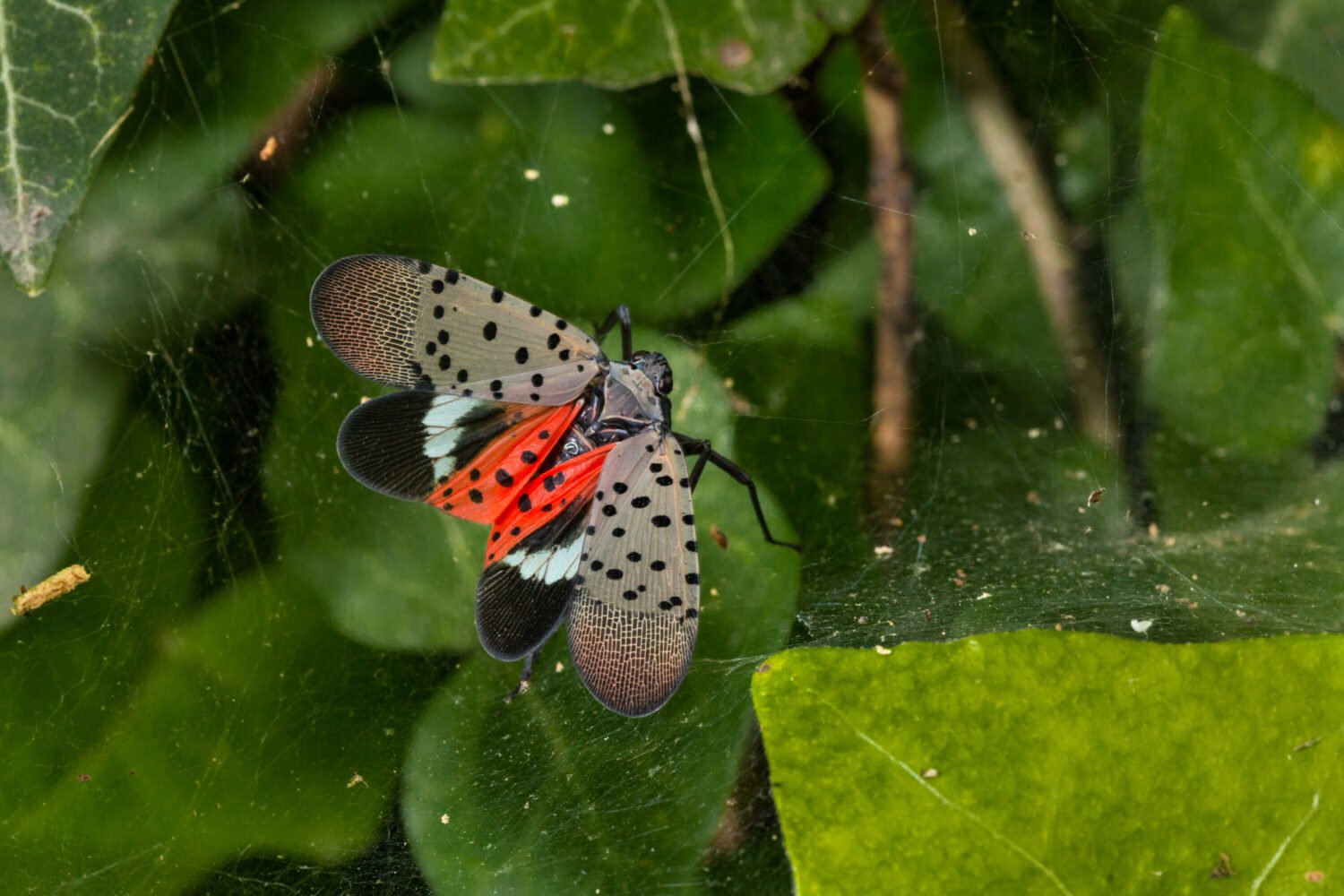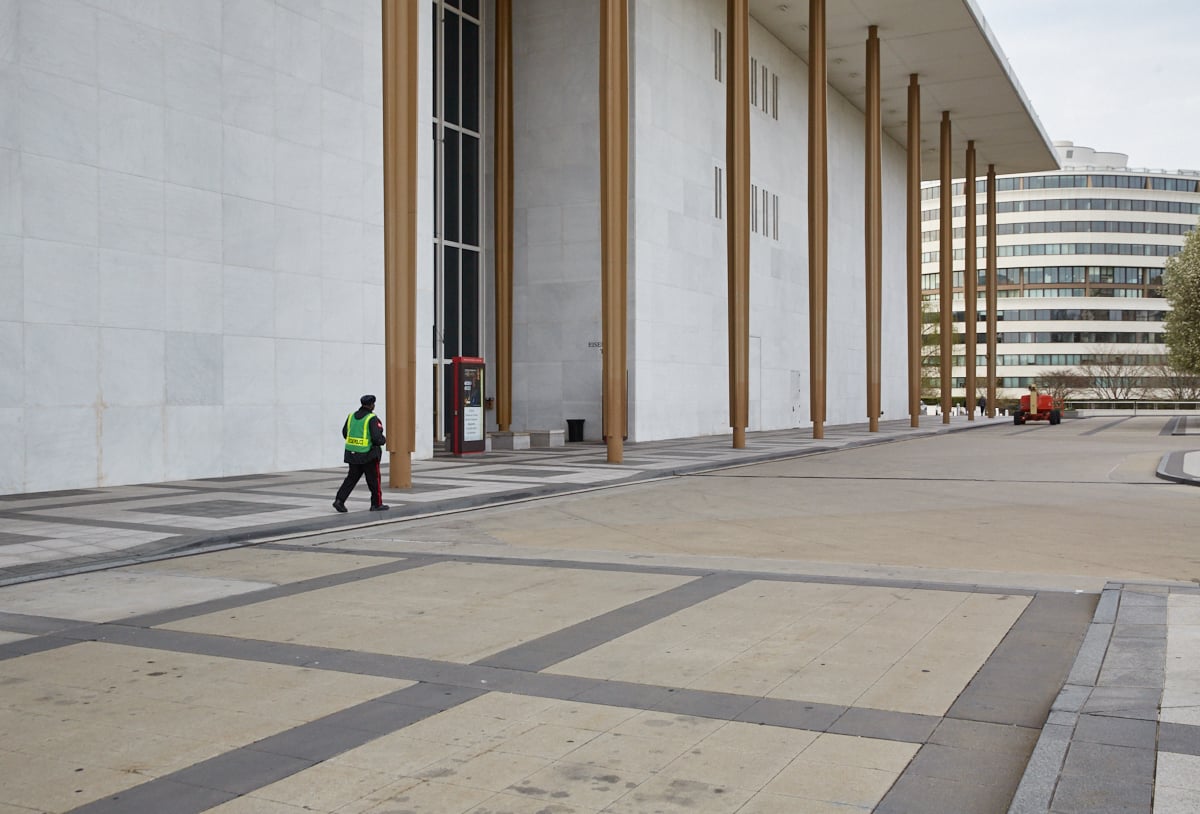“I’m telling you, what you’ve got down there is just friggin’ awesome. . . . Nothing like it anywhere in the world. . . . You gotta start telling people.”
“Almost afraid I’ll jinx it, but yeah, this could change everything.”
The two marine scientists were talking late at night in a pub in Cape Charles, Virginia, down where the Chesapeake Bay meets the Atlantic Ocean. They might have been talking about a richly laden treasure ship.
In fact, something worth more than a treasure ship has come to light this summer just beneath the shallow coastal waters not far from Washington. It’s a burgeoning meadow of eelgrass, extending close to a square mile and spreading rapidly.
Seagrasses populate the shallow waters along every continent but Antarctica. They’re part of a mix of coastal ecosystems that cover 10 percent of the planet but hold half of all nature’s worth, according to recent valuations of the world’s natural resources.
Even among the highly productive natures of the coastlines, the grasses are special. Scientists estimate the societal and environmental benefits of seagrasses to be as high as $8,000 an acre per year—twice that of tidal marshes, four times more than that of coral reefs.
These submerged meadows, which have been in serious decline around the Chesapeake Bay and the rest of the world, are so closely allied with waterfowl that two species, widgeon grass and redhead grass, take their names from ducks that depend on them for food. The canvasback, once the premier quarry of North American hunters, derives its name, Aythya valisneria, from the wild celery, Vallisneria americana, which once drew great flights of “cans” to the Chesapeake Bay and Potomac River.
Grass beds are superbly tonic habitat, generating oxygen so that they sometimes fizz with Champagnelike bubbles. Studies show they likely have healing, antibiotic properties. They offer shelter from predators, growing thick enough at times to offer sanctuary even from the nets and dredges of commercial fishermen.
No wonder young Chesapeake blue crabs are 30 times more abundant in seagrass beds than in surrounding areas, and that even a casual “lick” across a grassy bottom with the dredges employed by soft crabbers will turn up wriggling masses of young speckled trout, red drum, striped bass, grass shrimp, sea horses, and white perch, to name a few.
Every day, a single acre of grasses absorbs pollution equal to the treated sewage of 500 people. Five acres can sequester the carbon dioxide from an automobile driven 15,000 miles a year. The muddiest storm-water runoff is almost magically clarified wherever a large grass bed intercepts it.
The grasses are also our coastal canary, acutely sensitive to changes in water quality and hugging the shorelines where nearly a billion and a half of the world’s people live.
All of this information comes from Bob Orth of the Virginia Institute of Marine Science—he’s one of the world’s eelgrass experts. But it’s only part of what has motivated him to spend 40 years studying submerged aquatic vegetation. Everyone knows Orth as J.J., but few know that the nickname stands for Johnny Jock, from the exuberant, take-no-prisoners style of basketball he played as a student at the marine-science institute.
On a calm June morning, the 59-year-old scientist is still at it, romping like a puppy, diving, surfacing, thrashing with delight through the emerald, sunlit corridors of slender-bladed eelgrass.
“This is heaven!” he shouts, popping up with a fistful of fresh shoots, seeds ripe to bursting from within their translucent sheathes. Today we’ve hit an unexpected bonus—the grasses are releasing their tiny jade-green seeds by the millions. They powder the mirrorlike surface of the water across hundreds of acres, spreading on the tide to colonize other still-barren bottoms.
“We’re on the verge of what may be the most successful seagrass restoration in the world,” says Barry Truitt, longtime scientist on Virginia’s Eastern Shore for the Nature Conservancy and the man who was urging Orth to spread the news at the Cape Charles pub the night before.
It’s a big deal, Truitt explains, because for centuries, probably millennia, seagrasses dominated and invigorated the waters here as far as the eye could see. Early settlers used them for fuel, insulation, bedding for livestock, and fertilizer.
In the 20th century, a rich industry arose from harvesting the bay scallop, whose swimming larvae depended on eelgrass for a place to attach and grow. Hunters relished eating the flesh of the brant, a small goose that fed mostly on eelgrass.
In the early 1930s, a wasting disease weakened eelgrass across the Atlantic. The summer of 1933, a great August storm thrashed the Mid-Atlantic, uprooting great swaths of grasses. By September, the bottoms were bare, the bay scallops gone—and so it remained for nearly 70 years. The brant switched to eating slimy sea lettuce and small mollusks, and generations of hunters have grown up thinking the birds are inedible.
When Orth surveyed the bottom of the seaside bays near Cape Charles in 1997, he says, “eelgrass out here was just a rumor.” But the water quality seemed good, a perfect place to test the techniques he’d helped pioneer, harvesting seeds from healthy grass meadows elsewhere and sowing them in places needing restoration.
The results were encouraging but slow—a patch here, a patch there. As recently as last year, there was nothing to brag about. Then this year it came together: “un-f—ing-believable” in Orth’s scientific opinion.
Orth and Truitt are optimistic they can repopulate thousands of acres, and they’ve begun to explore spawning bay scallops in hatcheries for reintroduction. Says Orth: “We can change the whole ecosystem.”
That’s the good news. The bad news, Orth says: “It’s pretty sad everywhere else.”
By “everywhere else” he means much of the Chesapeake Bay and its tidal rivers. His eelgrass breakthrough has occurred just around the corner from the great estuary, in the seaside bays of the lower Delmarva Peninsula, where cool water flushed in and out by five-foot ocean tides creates good growing conditions.
For thousands of years, the larger Chesapeake Bay dwarfed the seaside as a grassy cornucopia. Scientists have extracted deep cores from the bay’s bottom, analyzing the preserved pollens and seeds of what grew in the watershed, deposited layer by layer through time in the sediments. They can date the advent of European land clearing, when the ratio of oak to ragweed pollen shifted toward ragweed, as well as the disappearance of American chestnut when the blight hit it in the early 1900s.
The botanical research shows that the submerged grasses flourished for thousands of years—until just the last century. That’s when humans literally capsized North America’s largest estuary, shifting the bay’s age-old balance from bottom-dwelling species such as the rooted grasses to floating pea-soup algae, turning clear waters to murk, flipping a major ecosystem as one might turn a turtle on its back.
In the Chesapeake Bay’s ability to grow seagrasses lay a terrible vulnerability. The estuary, from Havre de Grace to Norfolk, is about a million feet long and 100,000 feet at its widest—but a mere 21 feet deep on average. As you drive across the Bay Bridge or fish from Point Lookout at the Potomac’s mouth, it looks like big water. But it’s not deep down there.
That essential shallowness meant hundreds of thousands of acres of bay bottom were bathed in sunlight, elixir to seagrasses, which need far more light than land plants do.
But as human populations increased and agriculture intensified, there wasn’t much water to dilute the sewage and stormwater runoff from a 64,000-square-mile drainage area. Gentle one-to-two-foot tides, only slowly exchanging water with the ocean, compounded the problem.
Tropical Storm Agnes, in June 1972, kicked the bay’s seagrasses over the edge, dumping as much smothering sediment into the estuary in five days as it normally gets in a few decades. But Agnes only pulled the trigger—humans had been loading the gun for a while, destroying natural filters such as wetlands, forests, and oyster reefs that buffer the estuary from polluted runoff.
The grasses historically covered 200,000 acres of bay bottom—quite possibly a lot more. That coverage dropped to 37,000 acres by the early 1980s. Despite concerted state and federal attempts to restore the aquatic vegetation, acreage now is at less than 60,000.
Orth estimates that of about 500 acres of grasses planted in recovery attempts throughout the Chesapeake, only about 20 acres survive. Mike Naylor, a biologist working on a five-year eelgrass-recovery effort for Maryland, says four to five acres are still going strong out of 60 he has planted.
“Is four acres worth it?” Naylor asks. “On the one hand, it’s a low success rate. But on the other hand, we’ve got viable eelgrass in the lower Potomac River for the first time in decades. If you’re a sea horse or a grass shrimp or a speckled trout there, you’re pretty happy.”
Others are skeptical. “It’s a waste of time and money planting grasses until we restore the water quality,” says Court Stevenson, a University of Maryland researcher.
Stevenson spent the 1970s ferreting out the reasons for the decline in seagrasses. In a nutshell, he found that nutrients from farm fertilizers, sewage, and polluted air were overfertilizing the bay. This fueled the growth of floating algae and organisms that coated the leaves of the grasses, blocking light they need to grow. Sediment from development and shoreline erosion further clouded the waters.
Of all these insults, only sewage levels are being aggressively cut. Stevenson recalls being told by a top Maryland farm official after a talk in 1976: “If you ever use ‘agriculture’ and ‘pollution’ again in the same sentence, you will never get another cent in funding.”
“I didn’t have tenure then, so it was a real threat,” he says. “I took it as a challenge, but I did begin substituting ‘nutrient loadings’ for pollution when I spoke.” Farmers have made progress since then but remain the bay’s largest pollution source.
Another threat to the grasses has come from orange-beaked mute swans. An introduced species, mutes increased from two breeding pairs in 1962 to around 4,000, with 20,000 projected by 2010 if not checked.
Unlike black-beaked tundra swans, which migrate through the Chesapeake during winter months, mutes stay here, eating millions of pounds of underwater grasses—and competing with tundras and other native species for food and nesting space.
After years of wrangling in the courts with animal-rights activists, Maryland’s Department of Natural Resources cleared the way for a campaign to reduce the mute-swan population. Control techniques include shooting them or coating their eggs with oil to prevent hatching.
Just in the last couple of years, a new problem is arising with eelgrass—the Chesapeake Bay may be getting too hot for the species. Naylor has given up trying to plant eelgrass in the Patuxent River near Solomons Island. “The scientific literature suggests water temperatures above 80 degrees can be extremely stressful,” he says. Recently he’s seen the shallows in the Patuxent as hot as 95 degrees.
Temperature records stretching back 68 years show a slow bay warming—“pretty much following what climate-change science has been telling us,” says David Secor, a University of Maryland scientist.
Tougher air and water standards, along with giving farmers financial help, could reduce most pollutants, but how to chill the Chesapeake is another matter.
The picture isn’t all gloomy. To think of bay grasses as a single entity, all in trouble, is as misleading as characterizing oaks and walnuts, elms and azaleas, pines and magnolias all as ‘woody vegetation.’
Travel to the bay’s head, where the Susquehanna River delivers half of all the estuary’s freshwater daily from a third of Pennsylvania and southern New York state. Follow Mike Naylor on a blazing summer day as he skiffs out of Havre de Grace, across miles of the shallow Susquehanna Flats. The frequent shrilling of the overheat alarm on his outboard motor is music to the biologist’s ears—proof that the grasses just below are so thick that they clog the outboard’s cooling water intakes, threatening to halt the boat’s forward motion.
A decade ago, barren bottom dominated 95 percent of the flats, whose grasses once attracted so many waterfowl that the Baltimore Sun covered opening day of hunting as it now does the first Orioles home game.
In the last few years, the grasses, without any human plantings, have reclaimed perhaps 50 percent of the flats. And while near-monocultures such as eelgrass dominate the harsher, saltier conditions of the lower Chesapeake, the fresher water here allows a glorious diversity to thrive—fluffy coontail grass, broad oval-leaved redhead grass, elegantly branched horned and sago pondweed, bushy little naiads, water star grass with its showy, starlike golden flowers—each as individual as any species in a terrestrial forest.
If Bob Orth’s playground is the eelgrass, the flats of the northern bay are Naylor’s. He tirelessly preaches the virtues of underwater grasses to schoolkids and legislators. He has been kidded about being too young to have known the bay when it was full of grass, but it was Naylor who played a crucial role in evoking our remembrance of things past.
Curious about what it really used to be like beneath the Chesapeake, he spent months assembling aerial photography of the bay’s shorelines from the 1930s and ’50s, extracting acreage estimates for the grasses. His work led to the Environmental Protection Agency’s current goal of restoring 185,000 acres of bay grasses.
Snorkeling the flats with Naylor, you enter a sun-streaked jungle of redhead grass and ribbonlike wild celery so thick you have to part it forcefully. The female celery plants have thrust slender, fresh-green stalks to the surface, their tips unfolding delicate, creamy, three-petal blossoms, of which several would fit on your thumbnail.
Simultaneously from its roots in the bottom muds, the male celery is releasing sacs of pollen that burst on the surface, speckling the water as they disperse. The female flowers bob and tug gently to dimple the water’s surface, swirling the drifting male pollen into the slight depressions to coat their stigmata. Then the female’s flower stalk begins to coil and retract, pulling the fertilized seed back down toward the sediment to sprout. It’s thought that this keeps waterfowl from eating all of the celery’s seeds.
The redhead grass of the flats employs its own reproductive strategy, a watery
version of what sustains giant sequoia trees on land. Sequoias, which can live thousands of years, have evolved seed cones that germinate in the intense heat of periodic fires. The same forces that imperil the parents thus perpetuate the species.
Similarly, the best germination of redhead seeds occurs when there’s no salt in the water. That happens when big bay storms, which can weaken and kill the parent grasses, send huge flows of rainwater hurtling downriver, turning the bay totally fresh across hundreds of square miles.
It is such curious adaptations that fascinate Stephen Ailstock. “As a botanist, I could write a very good paper on how impossible it would be to have underwater plants,” says the Anne Arundel Community College researcher. “But there they are—bizarre, neat little plants that took the road less traveled.”
While Earth’s land plants occur in hundreds of thousands of varieties, Ailstock explains, only several dozen aquatic species ever successfully evolved.
He says we’ve mainly seen underwater grasses in terms of their importance for species such as waterfowl and blue crabs: “But I love them for themselves, as plants that have undergone some of the most remarkable adaptations of anything on this planet. It’s a whole lot easier to go from a hippo to a whale than from a daffodil to a seagrass. All the things that plants on land do—pumping water up from the roots through their leaves, pollinating, retaining vital fluids—none of it works underwater.”
We’re only now probing the secrets of the submerged vegetation, Ailstock says, compared with thousands of years of accumulated knowledge about terrestrial herbs and flowers and wood.
The seagrasses die back each fall as the nation’s flyways are coming to life with migrating waterfowl. The leaves of the declining seagrasses become increasingly fouled with tiny snails and other organisms, providing a shot of nutritious and restorative protein to the long-distance migrators that consume them. Later on, when the waterfowl are wintering and in need of a maintenance diet, they mine rich stores of sugars and starches stored by the grasses in their roots and tubers.
Ailstock, who recently coauthored a paper on the healing compounds in seagrasses, says: “It can’t be coincidence that so many critters spend their vulnerable early stages in aquatic vegetation. There’s something going on there beyond just good food and hiding places. In the next decade or two, we’ll discover a whole subtle chemical ecology of the grasses.”
Officially, statistically, the bottom line on bay grasses is this: The baywide recovery goal is 185,000 acres; the present acreage is about 60,000. The area encompassing the Susquehanna Flats and upper Chesapeake, with nearly 16,000 acres of grasses, is 92 percent of the way to meeting its part of the recovery.
The historic heart of the Chesapeake’s submerged vegetation bottoms, from the Bay Bridge down to the Virginia line, has about 31,000 acres, only 29 percent of the way to its part of the goal. Virginia, with 13,000 acres, is considered about 40 percent recovered.
Naylor says that for the first time in history there’s more grass in the upper, freshwater parts of the Chesapeake than in the salty lower bay. It’s ironic, he says, to see the comebacks in the more highly developed upper bay and the biggest declines in some of the most pristine-appearing sections farther south.
“I see grasses just booming in the Severn, where you couldn’t squeeze another house in,” Naylor says. “Hell if I know why.”
A similar scenario has occurred on the bay’s second-biggest river, the Potomac. Throughout the District and nearly 40 miles south to Quantico, a dozen grass species, including the nonnative hydrilla, have recolonized bottoms that were virtually bare in a 1978–81 survey, says Nancy Rybicki, a longtime Potomac expert with the US Geological Survey.
Waterfowl have surged, too, and professional bass-fishing guides make a living within sight of the DC skyline. Rybicki thinks that even in the Anacostia River as far up as Bladensburg, conditions may be good enough to justify planting wild celery and other species.
This doesn’t mean urbanization is the solution for the bay’s recovery. The fresher-water species that have rebounded best tend to be canopy formers, spreading their leaves most near the surface, able to get adequate sunlight in murkier water than the lower bay grasses can.
Freshwater grasses also do best where there is less phosphorus, a pollutant in sewage and farm runoff. Big phosphorus reductions have come at Blue Plains and other Potomac waste-treatment plants, and farmers and sewage plants in Pennsylvania have made some progress with phosphorus on the Susquehanna.
Grasses downbay suffer more from excess nitrogen, which does its main damage where the water is saltier, and there’s been less progress removing nitrogen from sewage and storm runoff.
Perhaps most important, scientists say, is that the Chesapeake, after 25 years of a federal-state restoration program, remains a system teetering on the edge, capable of impressive comebacks—and just as capable of discouraging downturns.
A classic symptom has been a large-scale shift in recent decades from eelgrass to widgeon grass, one of the few other species that can grow in the salty parts of the bay. Eelgrass is a perennial, a stable part of the system, available as habitat year around. Widgeon grass has its beauties, its golden seeds swelling like tiny ears of corn within translucent spathes, but it’s an annual, a pioneer—quick to colonize an area, just as quick to vanish.
Every year brings vows from environmentalists and political leaders to hasten the restoration of the bay and its grasses. The problems, the solutions, and their price tags are all well understood.
And you needn’t go back to the 1607 bay of Captain John Smith for a notion of the marvelous system that was the Chesapeake Bay when its shallows were green with grasses undulating in the tidal currents.
People alive now, including former Maryland state senator Bernie Fowler, recall when they needed crab nets with 10-to-12-foot handles to scoop crabs that were easily visible on the grassy bottom of the Patuxent River. Visibility nowadays is often less than a foot.
Vern Stotts, a retired Maryland biologist, recalls the survey of Eastern Bay he did in 1954; it documented 25,000 acres of seagrasses, visible down to 14 feet. That’s nearly as much grass in a pocket of water between Tilghman and Kent islands as exists now in the whole mid-Chesapeake.
The late author Gilbert Klingel wrote of standing in a diving suit 25 feet beneath the bay’s surface one day in the 1940s, watching his boat rock crazily in whitecaps breaking on the surface, as long yellow shafts of light illuminated the bottom where he stood.
I recall how my dad taught me to fish the Honga River around Hoopers Island in the late 1950s: “Look hard until you find a little bare spot among all the grass, and cast into that.” Often immediately, a striped bass would lunge from the grasses and swallow the bait.
Recently I’ve taught my own kids: “Look hard until you find a little grassy spot and cast next to it . . . .”
















